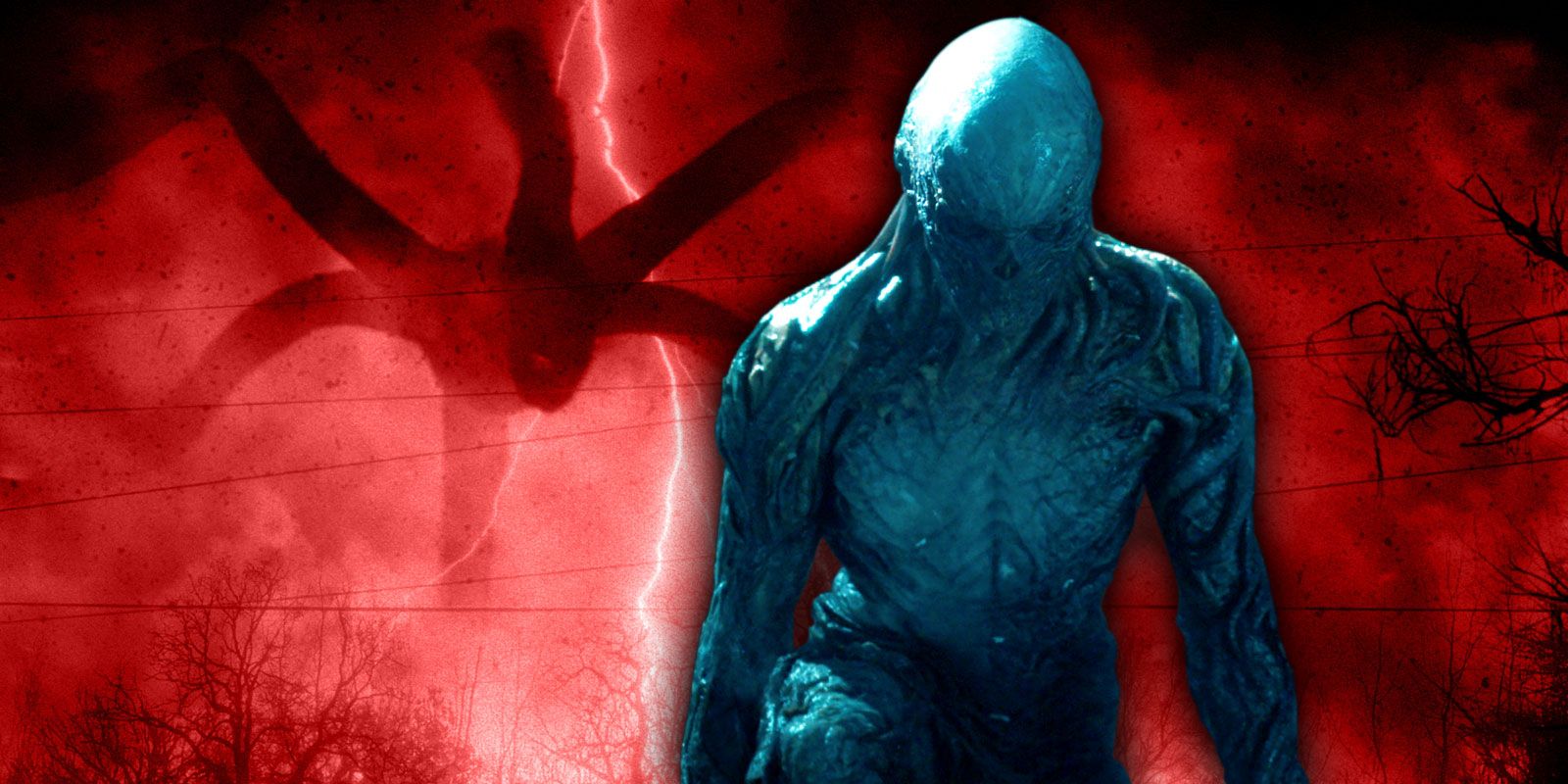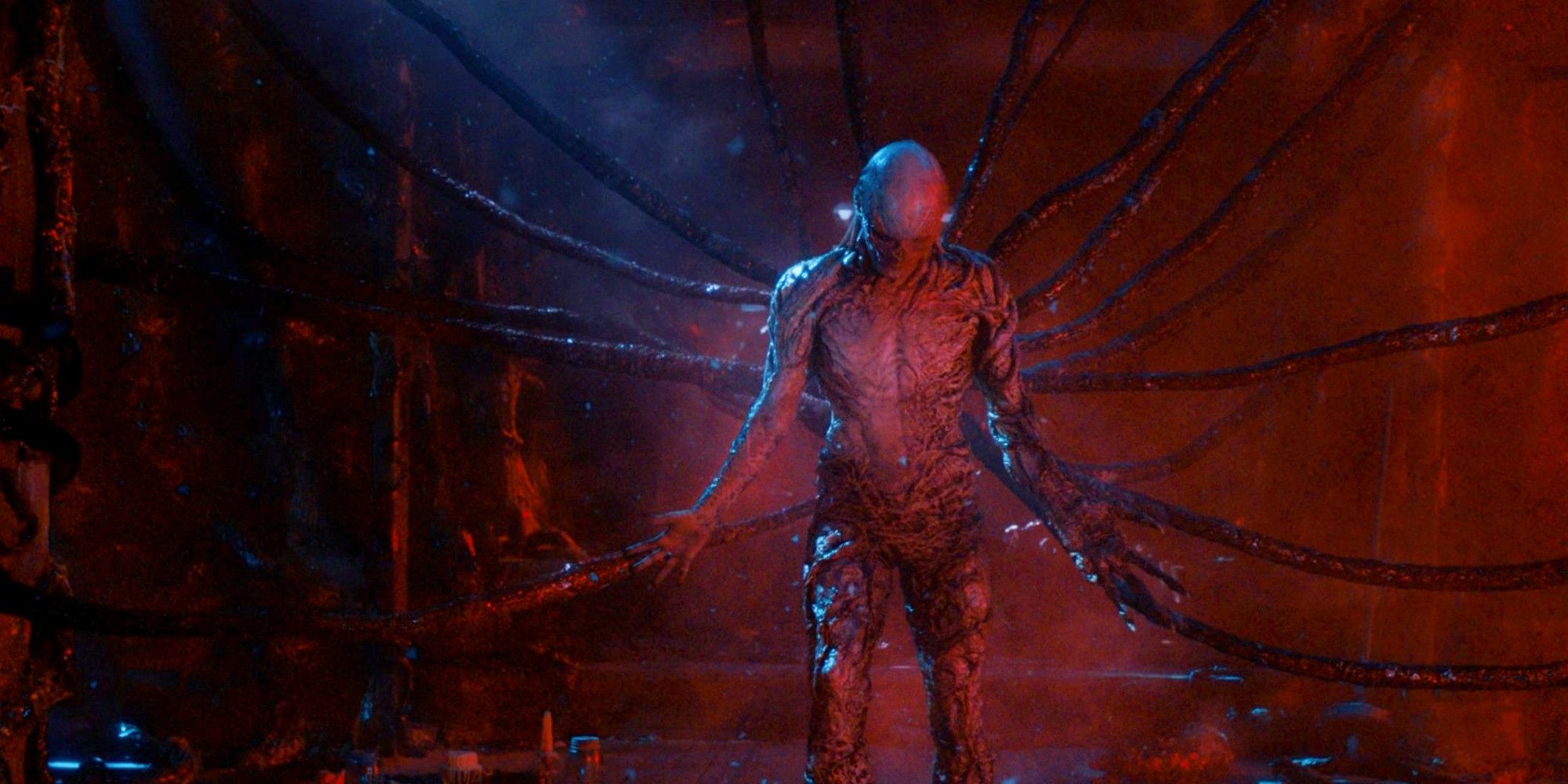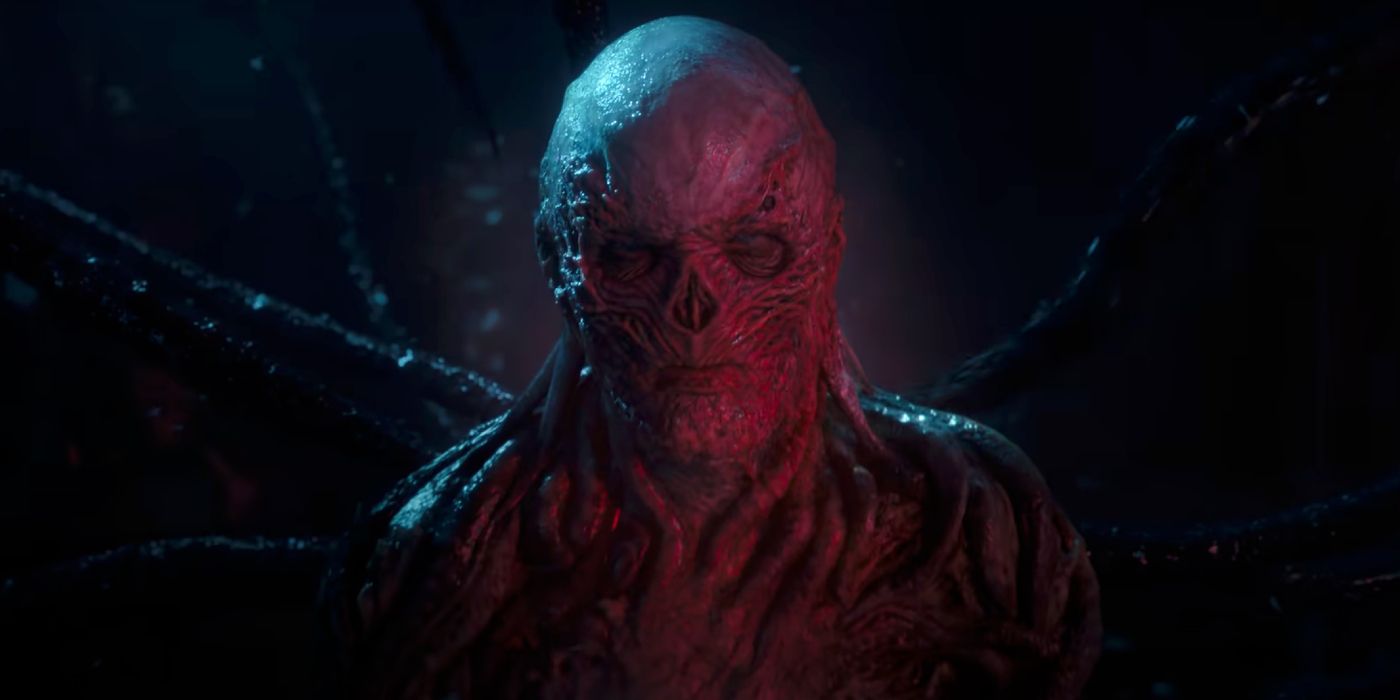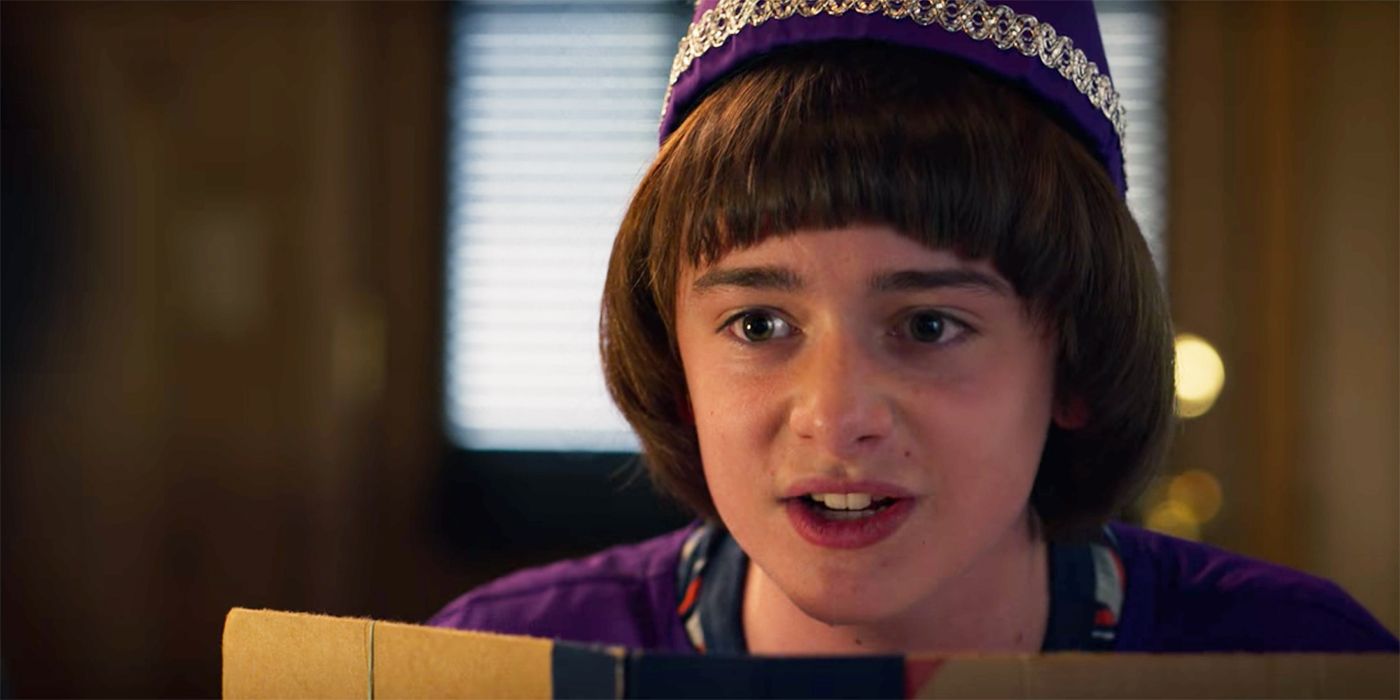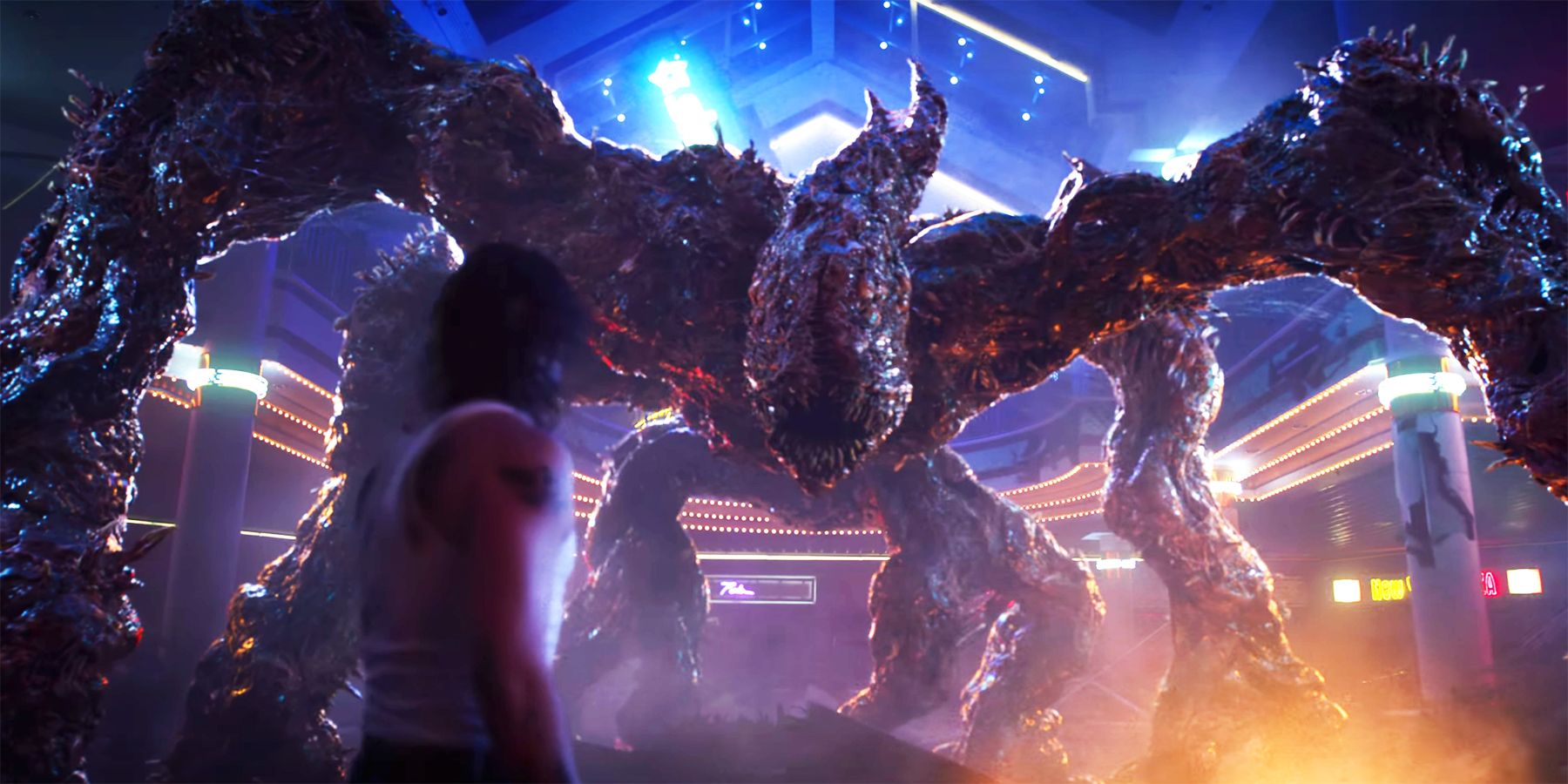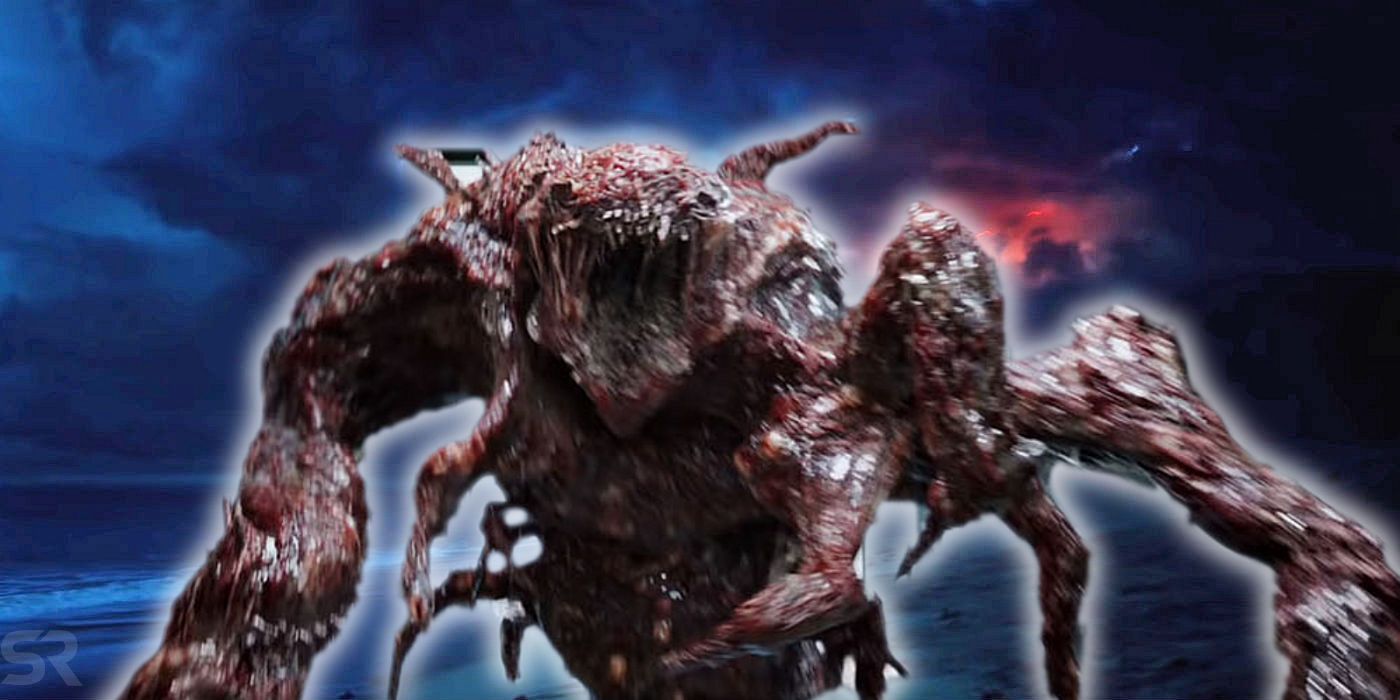The new villain in Stranger Things season 4 could be even scarier than the Mind Flayer from seasons 2 and 3, and here’s why. In just three seasons, Stranger Things has built its own mythology, which has taken inspiration from various works from the 1980s as well as from the fantasy tabletop role-playing game Dungeons & Dragons, though there’s still a lot that the series has to explain, such as the true nature of the Upside Down. Stranger Things season 4 promises to address some of these questions, but it's also introducing plenty of new lore by way of its main villain.
Stranger Things season 1 focused on the disappearance of Will Byers (Noah Schnapp) and the experiments at Hawkins Lab. Stranger Things season 2 explored the aftermath of Will’s return and the consequences of his time in the Upside Down, and season 3 revealed that the Russians were trying to open gates to the other dimension, and had settled a secret laboratory underneath the new Starcourt Mall. Every season has had two different types of villains: humans (Dr. Brenner, those working at Hawkins Lab, the Russians) and monsters (the Demogorgon, Demodogs, and the Mind Flayer).
As Stranger Things season 4 plunges even deeper into the mysteries of Hawkins and the Upside Down, it will also up the stakes in terms of villains. The human bad guys may be familiar, as Hopper is still trapped with the Russians and Dr. Brenner appears to be making a return. When it comes to Stranger Things season 4's supernatural villain, however, the kids will be facing a brand-new D&D-inspired threat that may be the show's scariest yet.
Vecna Is Stranger Things Season 4’s Monster
The new Upside Down villain in Stranger Things season 4 is Vecna, another monster borrowed from Dungeons & Dragons. Unlike the Demogorgon and the Mind Flayer, however, Vecna is a more humanoid, and seemingly more sentient, foe. In the D&D lore, Vecna was originally a wizard but became so corrupted by dark magic that he became a powerful, undead creature known as a lich. Stranger Things season 4's Vecna also appears to be a more human figure, and he even speaks in the official trailer, which is more than the Demogorgon and Mind Flayer have done. Footage shows Vecna connected to the Upside Down's signature root-like tendrils, and he's clearly been warped into something unnatural, but it's possible that Stranger Things' Vecna was also once a person, and there are theories that this is who Robert Englund is playing.
How Vecna Will Be Scarier Than Mind Flayer
Stranger Things' Vecna will be an even scarier enemy than the Mind Flayer because of his greater capacity for plotting and manipulation. While the Mind Flayer of Stranger Things seasons 2 and 3 was sentient and malicious, it never spoke and didn't seem to have a particularly strong comprehension of how humans operate. Vecna, by contrast, as a (possible) former human himself, will fully be able to match Stranger Things' young cast on an intellectual level, making him a more threatening foe. Likewise, if he has wizard-adjacent abilities like his D&D counterpart, this could also mean he's much more powerful. If nothing else, Vecna (possibly portrayed by Robert Englund in the show) also sports a highly chilling appearance. Because Stranger Things season 4 promises higher stakes and a bigger scope than ever before, it makes sense that the main villain is set to outshine the Mind Flayer.
Stranger Things’ D&D Influence
Stranger Things season 4's Vecna takes a leaf from the D&D-inspired baddies of previous seasons. Stranger Things' writers have continuously drawn inspiration from Dungeons & Dragons, and the characters are avid players. One of the first scenes in Stranger Things shows Will, Mike, Dustin, and Lucas playing at Mike’s house. The group has even used the world and creatures of D&D to better explain what has happened around them. For starters, Eleven used the game board to explain where Will was in Stranger Things season 1, with the kids realizing that meant he was trapped in an alternate realm hidden from sight but connected with their own, very much like the underside of the board, and started referring to Will's prison as the “Upside Down.” Dustin later compared the Upside Down to D&D’s “Vale of Shadows” (which, in real life, isn’t an official part of D&D canon), which is described as a dimension that is “a dark reflection, or echo, of our world” and a place of “decay and death, a plane out of phase, a place of monsters. It is right next to you and you don’t even see it”.
The Demogorgon of Stranger Things was named after a powerful D&D demonic monster. In the game, the Demogorgon is known as the Prince of Demons and is depicted as an 18ft tall reptilian hermaphroditic demon with a somewhat humanoid form, with two mandrill heads sprout from its twin snake-like necks, and arms that end in long tentacles. The Demogorgon in Stranger Things season 1 was given that name after Eleven used that game piece to show what Will was hiding from. The Mind Flayer also comes from the world of D&D, and in it, it’s a psychic humanoid with tentacles on its face and it eats brains. It mainly uses its psychic abilities to mentally enslave other beings, which is why Dustin used it as an example to explain the Shadow Monster and its motivations. However, given the Mind Flayer’s abilities shown in Stranger Things season 3, the creature can also be compared to a more modern creature from D&D: the Oblex.
The Mind Flayer and The Oblex
As pointed out by Nerdist, Stranger Things season 3 added some of the Oblex’s characteristics to the newly returned Mind Flayer. In D&D, the Oblex is a very intelligent ooze created by Mind Flayers that feeds on other creatures' memories. It's capable of using those memories to create replicas of its victims, which it uses to hunt. An Oblex looks like a big, red, gelatinous thing with tentacles and screaming faces inside its body. It can create credible copies of its victims, which are made of the same ooze as the Oblex, and are pretty much identical to the victim except for a faint smell of sulfur. The replica can move up to 120ft far from the Oblex, but it can’t separate from it entirely.
In Stranger Things season 3, the Mind Flayer operated in a similar way: it took control of Billy and used him to build an army, referred to as “the Flayed.” Those “infected” were instructed to ingest various chemicals and were later called back by the Mind Flayer to turn to goo and become one with the monster, creating a much bigger Mind Flayer. Although these weren’t replicas of the victims, but rather the original bodies being controlled by the Mind Flayer, it’s a concept similar to that of the Oblex.
Why The Mind Flayer Can’t Return
The Mind Flayer has already been the (evil) star in two Stranger Things seasons, and while it’s an interesting, dangerous creature, Stranger Things season 4 needs to (and will) explore other options. The Upside Down is home to more than Demogorgons and the Mind Flayer, after all. Using the Shadow Monster one more time would be like recycling a character and trying to keep it relevant by giving it new abilities (which would ultimately become tiresome). The Mind Flayer was supposedly defeated at the end of Stranger Things season 3, with the gate closed once more and thus cutting the connection of the body with the brain – but the same happened in season 2, and the remnants of the creature in this dimension are what made its return possible. In Stranger Things season 4, however, it seems that the Mind Flayer will be eclipsed for good, and Vecna will wreak havoc in its place.

